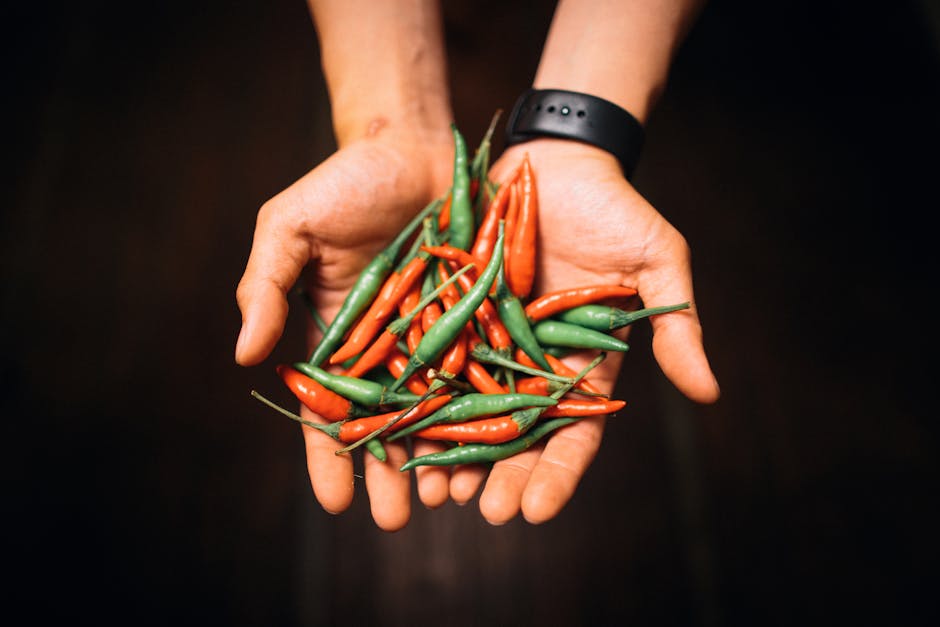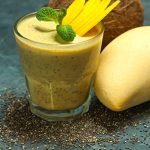Spicy Thai Green Curry, a vibrant and aromatic dish, holds a significant place in Thai cuisine and global gastronomy. Its origins aren’t precisely pinpointed to a single moment in history, but rather evolved over centuries, reflecting the rich culinary tapestry of Thailand. The dish’s foundation lies in the country’s diverse regional cooking styles, with influences from both Central and Southern Thailand, where the use of green chilies and coconut milk is prominent. While exact dates are elusive, its popularity surged alongside the broader internationalization of Thai food in the late 20th century, contributing to its widespread recognition today.
The key ingredients – green chilies, lemongrass, galangal, kaffir lime leaves, and fish sauce – speak to the unique flavor profile of Thai cooking. The vibrant green hue comes from the generously used green chilies, which deliver a characteristic heat that varies based on the specific variety and the chef’s preference. Coconut milk provides a creamy counterpoint to the spice, creating a balance between richness and fiery intensity. The use of these ingredients is not arbitrary; they reflect the readily available produce in Thailand’s tropical climate, showcasing the country’s ingenious adaptation of its natural resources into culinary masterpieces.
Beyond its deliciousness, Thai Green Curry has considerable cultural significance. It’s frequently served at special occasions and family gatherings, symbolizing the warmth and generosity of Thai hospitality. While the exact recipe can vary from household to household, or even from region to region, the dish maintains a core identity that is instantly recognizable. Its popularity extends beyond Thailand’s borders; it’s estimated that over 50% of Thai restaurants worldwide offer a version of green curry on their menu, a testament to its global appeal. This widespread adoption, however, doesn’t negate the dish’s strong roots in Thai culture and tradition.
Interestingly, the international popularity of Thai Green Curry has also led to adaptations and variations. While some remain faithful to the traditional recipe, others incorporate ingredients from other culinary traditions, resulting in fusion dishes. Despite these modifications, the core essence of Thai Green Curry – the blend of aromatic herbs, fiery green chilies, and creamy coconut milk – remains intact, ensuring its continued reign as a beloved dish across cultures. Its enduring appeal lies not only in its delicious taste but also in its ability to evoke the rich history and vibrant culture of Thailand.
Ingredients and Measurements
This recipe yields approximately 4 servings of Spicy Thai Green Curry. Accurate measurements are crucial for achieving the desired balance of flavors and textures. We recommend using a kitchen scale for the most precise results, especially for the spices.
Green Curry Paste: 4 tablespoons (60g). The intensity of the curry paste varies significantly between brands. Start with 4 tablespoons and taste-test before adding more. If you prefer a milder curry, reduce the amount to 3 tablespoons. For a spicier kick, add up to 5 tablespoons, but proceed cautiously! Look for a paste that lists fresh chilies, lemongrass, galangal, and kaffir lime leaves as prominent ingredients. Avoid pastes containing excessive preservatives or artificial flavors.
Coconut Milk: 1 (13.5 ounce) can, full-fat. Full-fat coconut milk is essential for creating a rich and creamy curry. Light coconut milk will result in a thinner, less flavorful sauce. Ensure the coconut milk is well-shaken before use to distribute the cream evenly. We recommend using a reputable brand known for its quality.
Chicken or Tofu: 1 pound (450g). Boneless, skinless chicken thighs are recommended for their juiciness and flavor. Alternatively, use firm tofu, pressed to remove excess water, for a vegetarian option. Cut the chicken or tofu into bite-sized pieces of approximately 1 inch. Consistent sizing ensures even cooking.
Vegetables: The beauty of green curry lies in its adaptability. Feel free to adjust the vegetables based on your preference and availability. We recommend the following quantities as a starting point:
- Bamboo Shoots: 1 (14 ounce) can, drained and rinsed. Choose whole bamboo shoots for a more authentic texture.
- Green Beans: 1 cup (100g), trimmed and halved.
- Bell Peppers: 1 cup (150g), any color, thinly sliced.
- Thai Eggplant (optional): 1 medium (150g), roughly chopped – this adds a unique smoky flavor.
- Thai Basil: 1/2 cup (30g), roughly chopped – add at the very end for optimal freshness.
Other Ingredients:
- Fish Sauce: 2 tablespoons (30ml). This adds a savory umami depth to the curry. Start with 2 tablespoons and adjust to your taste.
- Brown Sugar: 1 tablespoon (15g). Balances the spiciness and adds a subtle sweetness.
- Lime Juice: 2 tablespoons (30ml), freshly squeezed. Adds brightness and acidity.
- Vegetable Oil: 2 tablespoons (30ml). Use a neutral-flavored oil with a high smoke point, such as canola or vegetable oil.
Important Note: Adjust the amount of chili in the green curry paste or add fresh chilies to further customize the spiciness level to your liking. Always taste and adjust seasonings throughout the cooking process to achieve your preferred flavor profile.
Mise en Place (Preparation of Ingredients)
Proper preparation is key to a successful Spicy Thai Green Curry. Mise en place, meaning everything in its place, ensures a smooth and efficient cooking process, allowing you to focus on the nuances of flavor development. This section details the preparation of all ingredients before you begin cooking.
Green Curry Paste: For this recipe, we’ll use 4 tablespoons (60g) of high-quality Thai green curry paste. Choose a paste with vibrant green color and a strong, fragrant aroma. Avoid pastes that appear dull or have a musty smell, as this indicates they may be old or of inferior quality. If making your own paste, ensure all ingredients are finely ground for a smooth and even curry.
Coconut Milk: We’ll need 1 (13.5 oz) can of full-fat coconut milk. Before opening, gently shake the can to redistribute the cream. This ensures a creamy and rich curry. Pour the coconut milk into a measuring jug to easily separate the cream from the watery liquid. We will use the creamier top portion first for the curry base, reserving the thinner liquid for later if needed to adjust consistency.
Vegetables: Precise chopping is crucial for even cooking and appealing presentation. Start with 1 large red bell pepper, 1 large green bell pepper, and 1 medium red onion. Finely chop the onions and peppers into roughly 1/2 inch pieces. Consistency in size ensures that all vegetables cook evenly. Next, prepare 1 cup of bamboo shoots, sliced into 1/2-inch rounds. If using fresh bamboo shoots, be sure to thoroughly rinse and clean them. Finally, prepare 1 cup of green beans, trimmed and cut into 1-inch pieces. You can also add other vegetables like zucchini or eggplant, cut to a similar size.
Protein: This recipe uses 1 pound of boneless, skinless chicken breasts, cut into 1-inch cubes. Ensure the chicken is completely dry before cooking to promote browning. Patting it dry with paper towels will help achieve a better sear. You can substitute the chicken with tofu, shrimp, beef, or vegetables for a vegetarian option. Adjust cooking time accordingly depending on the protein used.
Aromatics & Herbs: Mince 4 cloves of garlic and 2-inch piece of ginger finely. This releases their aromatic oils effectively. Similarly, finely chop 4-6 Thai chilies, adjusting the quantity based on your desired level of spiciness. Handle chilies carefully, avoiding contact with your eyes or skin. Wash your hands thoroughly after handling them. Finally, prepare 1/2 cup of fresh Thai basil leaves for garnishing at the end. These fragrant leaves add a final burst of flavor.
Other Ingredients: Measure out 2 tablespoons of fish sauce, 1 tablespoon of brown sugar, and the juice of 1 lime. These ingredients will be added towards the end of cooking to balance the flavors. Have all your ingredients pre-measured and readily available near your cooking station for a seamless cooking experience. This includes your cooking oil (2 tablespoons of vegetable oil is recommended).
Important Note: Prepare all your ingredients before you start cooking. This will prevent rushing and ensure a more controlled cooking process. Having everything measured and ready will enhance the overall quality of your Spicy Thai Green Curry.
Paste Preparation (If making paste from scratch)
Making your own green curry paste is incredibly rewarding, offering a depth of flavour unmatched by store-bought versions. It’s also a great way to control the spice level precisely to your liking. This recipe yields approximately 1 cup of paste, enough for several curries.
Ingredients:
- 4-6 Thai green chilies, roughly chopped (adjust to your spice preference; more for extra heat, fewer for milder curry)
- 4 stalks lemongrass, tough outer layers removed, finely chopped
- 4-6 cloves garlic, roughly chopped
- 2-inch piece of galangal, peeled and roughly chopped (can substitute with ginger, but the flavour will be slightly different)
- 1 inch piece of fresh turmeric root, peeled and roughly chopped
- 1/2 cup fresh cilantro roots and stems, roughly chopped (leaves reserved for garnish)
- 1/4 cup roasted peanuts (unsalted), roughly chopped – for a richer, nuttier flavour
- 2 tablespoons shrimp paste (belacan) – use sparingly, as it has a strong pungent aroma. If you are sensitive to pungent smells, start with 1 tablespoon and adjust to taste
- 1 tablespoon fish sauce (nam pla)
- 1 teaspoon ground cumin
- 1 teaspoon ground coriander
- 1/2 teaspoon white pepper
Equipment: You will need a mortar and pestle or a high-powered food processor for this step. A mortar and pestle creates a more textured paste, while a food processor gives a smoother result. Choose the method that best suits your preference and available tools.
Instructions (Mortar and Pestle):
Begin by pounding the chilies in the mortar until they release their oils and become a rough paste. Add the lemongrass, garlic, galangal, and turmeric, pounding until a coarse paste forms. Gradually add the cilantro roots, peanuts, shrimp paste, fish sauce, cumin, coriander, and white pepper, continuing to pound until a smooth, fragrant paste is achieved. This process takes time and effort; be patient and persistent. Add a tablespoon or two of water if the paste becomes too dry and difficult to work with.
Instructions (Food Processor):
Combine all ingredients in a food processor. Pulse until a coarse paste forms, then process for a further 1-2 minutes until smooth. Scrape down the sides of the bowl as needed. Start with shorter pulses to avoid overheating the motor and ensure even processing. Over-processing can lead to a bitter taste. Add a tablespoon or two of water if necessary, to achieve a smooth paste consistency.
Important Notes:
Freshness is key! Using the freshest ingredients possible will significantly enhance the flavour of your paste. If using dried chilies, you may need to soak them in warm water for 15-20 minutes before using them. Adjust the amount of chilies based on your spice tolerance. Start with fewer chilies and add more gradually until you reach your desired level of spiciness. Store your homemade paste in an airtight container in the refrigerator for up to a week, or freeze it for longer storage.
Cooking the Spicy Thai Green Curry
Now that we’ve prepped all our ingredients, it’s time to bring the magic of Thai green curry to life! This section will guide you through the cooking process, ensuring a flavorful and aromatic curry that will tantalize your taste buds. Remember, the key to a great curry is patience and attention to detail.
First, heat 2 tablespoons of coconut oil in a large, heavy-bottomed pot or wok over medium heat. A wok is ideal for its even heating and ability to handle higher temperatures, but a sturdy pot will work just as well. Once the oil is shimmering, add 1 tablespoon of finely minced galangal and 1 tablespoon of finely minced lemongrass. Sauté for about 2 minutes, stirring frequently, until fragrant. This step releases the essential oils and lays the foundation for the complex flavors of the curry.
Next, add 1-2 green chilies, finely chopped (adjust to your spice preference!), and 2 cloves of minced garlic. Sauté for another minute, until the chilies soften slightly and the garlic is fragrant. Don’t burn the garlic; it will become bitter. If you are using fresh chilies, remember to wash your hands thoroughly after handling them.
Now it’s time to introduce the star of the show: the green curry paste. Add 4 tablespoons of Thai green curry paste to the pot. Stir well and cook for 2-3 minutes, ensuring the paste is thoroughly heated and the oil separates slightly. This step helps to deepen the flavor of the paste and cook away any potential raw flavor.
Pour in 1 (13.5 ounce) can of full-fat coconut milk. Stir to combine completely and bring the mixture to a gentle simmer. Reduce the heat to low to prevent scorching. Allow the curry to simmer for about 5 minutes, allowing the flavors to meld together. This slow simmering process is crucial for developing a rich and creamy texture.
Add 1 pound of your choice of protein (chicken, beef, tofu, or shrimp, cut into bite-sized pieces). Stir gently to coat the protein with the curry sauce. Continue to simmer for 8-10 minutes, or until the protein is cooked through. If using shrimp, reduce the cooking time to 3-5 minutes to prevent overcooking.
Finally, stir in 1 cup of your favorite vegetables (such as bamboo shoots, bell peppers, eggplant, and green beans, cut into bite-sized pieces). Continue to simmer for 5-7 minutes, or until the vegetables are tender-crisp. Don’t overcook the vegetables; they should retain a slight bite. Season with 1 tablespoon of fish sauce, 1 tablespoon of brown sugar, and 1/2 tablespoon of lime juice. Adjust seasoning to your taste.
Serve hot with steamed jasmine rice and garnish with fresh cilantro and lime wedges. Enjoy your delicious homemade Spicy Thai Green Curry!
Serving Suggestions
Your Spicy Thai Green Curry is ready to be enjoyed! To fully appreciate the depth of flavor and texture, consider these serving suggestions designed to complement and enhance the experience.
Classic Pairing: Jasmine Rice. Serve your Spicy Thai Green Curry with 2-3 cups of fluffy Jasmine rice per person. The fragrant rice provides a neutral base that beautifully contrasts with the curry’s vibrant flavors and spiciness. Ensure the rice is cooked properly; slightly sticky rice is ideal for absorbing the delicious sauce.
Elevate the Texture: Add-ins. Consider adding various textural elements to your serving. A simple garnish of 1/4 cup chopped fresh cilantro per serving adds a bright, herbaceous note. Similarly, a sprinkle of toasted sesame seeds (approximately 1 tablespoon per serving) lends a nutty aroma and pleasant crunch. You can also incorporate 1/2 cup of chopped roasted peanuts for a satisfying salty and crunchy addition.
Accompaniments for Balance: To balance the richness and heat of the curry, offer a selection of accompaniments. A simple lime wedge (1-2 per serving) allows diners to adjust the acidity and brightness to their preference. Consider adding a small bowl of sliced fresh chili peppers for those who crave extra heat. A side of plain yogurt or coconut milk (approximately 1/4 cup per serving) can help cool down the palate between bites, especially for those sensitive to spice.
Garnish Ideas for Visual Appeal: The presentation of your dish matters just as much as its taste. Consider garnishing each serving with a few vibrant kaffir lime leaves. Their subtle citrusy aroma adds another layer of complexity. You can also use thin slices of red chili for a visually appealing and spicy touch. Arrange the garnish artfully for an aesthetically pleasing final touch.
Serving Temperature: Serve your Spicy Thai Green Curry hot, straight from the stovetop or gently reheated. Avoid over-heating, as this can cause the delicate flavors to evaporate and the curry to become overly thick. If reheating, do so over low heat, stirring frequently to prevent scorching.
Serving Size and Portions: The recipe yields approximately 6 servings. Adjust the ingredient quantities proportionally if you need to serve more or fewer people. Consider the appetites of your guests when determining portion sizes; a generous serving of curry with a sufficient amount of rice is generally appreciated.
Dietary Considerations: Remember to inform guests about any potential allergens present in the curry, such as peanuts or coconut. If serving to vegetarians or vegans, ensure all ingredients used are suitable for their dietary restrictions. You can easily adapt this recipe to be gluten-free by using gluten free soy sauce or tamari.
By following these serving suggestions, you can create a truly memorable and delicious Thai Green Curry experience for yourself and your guests. Enjoy!
Tips and Tricks for Authentic Flavour
Achieving truly authentic Thai green curry flavour requires attention to detail and a nuanced understanding of Thai ingredients. This section provides crucial tips and tricks to elevate your dish beyond the ordinary.
Start with Fresh Ingredients: The foundation of any great Thai green curry lies in the quality of its ingredients. Use fresh, high-quality ingredients whenever possible. Avoid pre-ground spice blends as they often lack the depth and complexity of freshly ground spices. Instead, invest in whole spices and grind them yourself just before use. This significantly impacts the aroma and flavour profile.
Mastering the Green Curry Paste: A good quality green curry paste is paramount. While you can buy pre-made paste, making your own allows for precise control over the flavour profile. A typical recipe calls for approximately 4-6 tablespoons of green curry paste per 4 servings. If making your own, use a mortar and pestle for the most authentic texture and flavour release. The key is to gradually add ingredients, pounding until smooth and fragrant. Don’t rush this process! The longer you pound, the more flavour is extracted.
Balancing Flavours: Thai green curry is a symphony of sweet, sour, salty, spicy, and savoury notes. Achieving the right balance is crucial. Start by using 2-3 tablespoons of fish sauce for a rich umami flavour. Adjust to taste – some prefer a stronger fish sauce presence. Then, add 2-3 tablespoons of brown sugar or palm sugar for sweetness. This balances the spice and saltiness. Finally, the acidity is provided by 2 tablespoons of lime juice, added towards the end of cooking. Again, adjust to your preference.
Spice Level Control: Thai green curry’s signature heat comes from green chilies. The amount you use dictates the spice level. Start with less and gradually add more until you achieve your desired level of spiciness. Remember that the heat intensifies as the curry simmers. For those sensitive to spice, consider removing the seeds and membranes from the chilies before adding them to the paste.
Coconut Milk Choice Matters: Use full-fat coconut milk for the richest, creamiest curry. Avoid light coconut milk as it lacks the necessary fat content for a truly authentic texture and flavour. Add the coconut milk in two stages: First, add about 1 can (400ml) of coconut milk to sauté the paste and aromatics. Then, stir in another ½ can (200ml) towards the end to maintain a luscious consistency. Don’t boil the curry vigorously; this can cause the coconut milk to curdle.
Garnish Generously: Fresh garnishes are essential for both visual appeal and flavour enhancement. Fresh Thai basil leaves, chopped cilantro, and lime wedges are classic choices. Consider adding sliced red chilies for an extra kick and a pop of colour. A sprinkle of toasted sesame seeds adds a delightful nutty note.
Serving Suggestions: Serve your authentic Thai green curry hot with steamed jasmine rice. Offer a variety of accompaniments such as shredded coconut, chopped peanuts, and pickled vegetables to enhance the overall dining experience. Enjoy!
Spicy Thai Green Curry: Recommendations
This Spicy Thai Green Curry is best enjoyed fresh, but leftovers can be stored properly for optimal taste and safety. For best results, consume within 2-3 days of preparation. Store leftovers in an airtight container in the refrigerator at a temperature below 40°F (4°C). Avoid leaving the curry at room temperature for extended periods to prevent bacterial growth. Reheating should be done thoroughly until steaming hot.
Serving Suggestions: This vibrant curry is incredibly versatile and can be enjoyed in a variety of ways. Serve it hot over steamed jasmine rice, allowing the fragrant rice to absorb the flavorful sauce. Alternatively, you can serve it with fluffy coconut rice for an extra layer of richness and sweetness that complements the spiciness of the curry. For a more substantial meal, consider serving it with roti, naan bread, or even crusty bread for dipping. Garnish with fresh cilantro or Thai basil leaves for added freshness and aroma. A squeeze of lime juice just before serving brightens the flavors and adds a delightful tang.
Complementary Dishes: To create a truly authentic Thai meal, consider pairing your Spicy Thai Green Curry with some complementary dishes. A simple side salad with a light vinaigrette provides a refreshing contrast to the richness of the curry. Consider a cucumber salad or a green papaya salad (Som Tum) for a vibrant and contrasting texture and flavor profile. For a heartier side, a stir-fried vegetable dish like gai lan or morning glory adds additional nutrients and a pleasant textural element. A small bowl of steamed edamame or other lightly seasoned vegetables offer a healthy and refreshing counterpoint to the spiciness.
Nutritional Information (per serving, approximate): This will vary depending on the specific ingredients and portion size used. However, a typical serving of Spicy Thai Green Curry will contain approximately 350-450 calories. The macronutrient breakdown will be roughly 15-20g of protein, 20-30g of fat (depending on coconut milk used), and 25-35g of carbohydrates. The curry is a good source of vitamin C from vegetables like bell peppers and bamboo shoots, and provides a decent amount of vitamin A and other essential minerals. Please note that this is an estimate, and the actual nutritional content may vary.
Important Note Regarding Spice Level: The spiciness of this recipe is adjustable to your personal preference. You can control the heat by adjusting the amount of green chilies used. If you prefer a milder curry, start with fewer chilies and add more gradually to taste. For those who enjoy a fiery kick, feel free to add more green chilies or a dash of chili flakes. Always adjust the spice level to your own tolerance.





